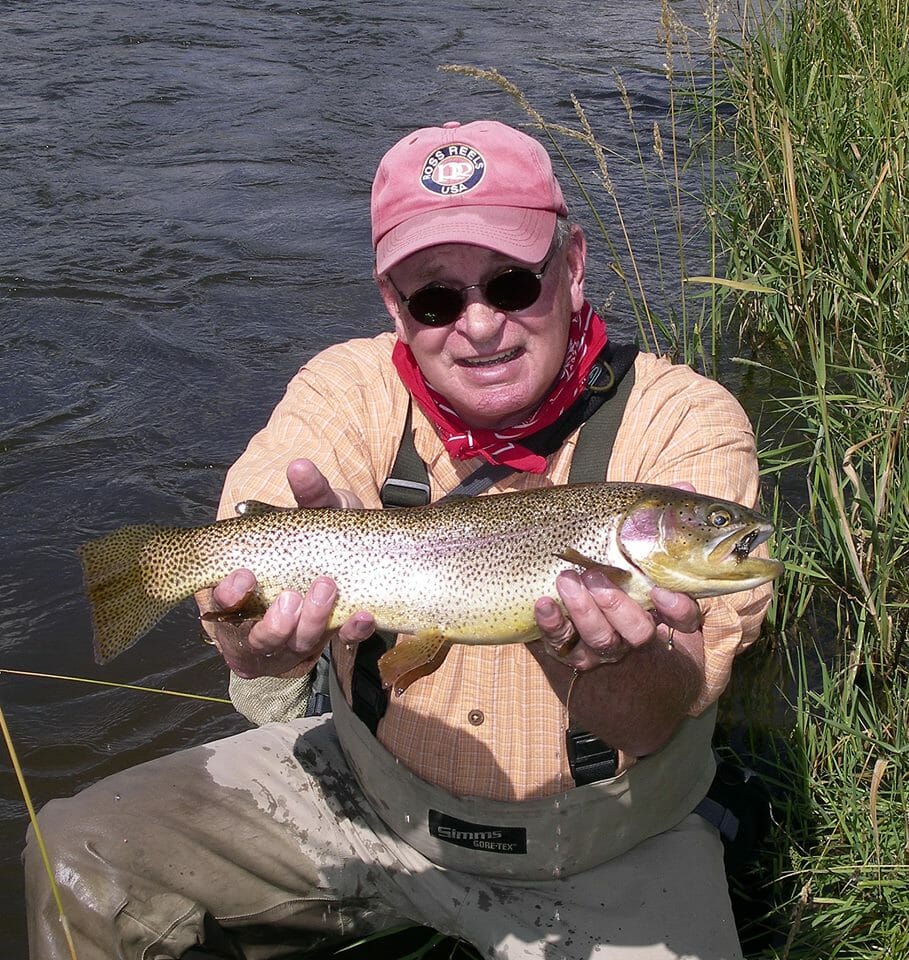Pat Oglesby
Several years ago, my friend Pat Oglesby, a long-time TU volunteer and a leader within the Grand Valley Anglers chapter of Trout Unlimited in Grand Junction, asked me to come and speak to the chapter’s ann
ual banquet that takes place in conjunction with its annual fly tying expo. I’d known Pat and his wife Carol for years—they were well-traveled fly fishers who, above all else, loved all things wild. Pat and Carol were regular attendees at the Eastern Idaho Fly Fishing and Fly Tying Expo here in Idaho Falls—they’d combine a trip to this neck of the woods with a spring visit to Yellowstone, where they would drive through the Lamar Valley and glass the horizon for grizzly bears and wolves. Like I said, all things wild.
I’m a horrible public speaker. But I couldn’t say no to Pat, so I put on my big boy pants and stammered through a 20-minute presentation on the places we love to fish, not the least of which, in terms of importance, was the Roan Plateau in western Colorado. Pat’s chapter has literally adopted the Roan as its own, restoring the headwaters of Trapper Creek and helping provide volunteer support for lots of restoration and protection work that TU has done in the area for a couple of decades.
We got to the slide in my presentation about the Roan, and I remember saying, “We’re gonna win this thing.” At the time, the Roan’s fate was largely in the hands of a judge, but I knew we had staked out the high ground. Our energy staff in the West, along with the great leadership staff at Colorado TU and Grand Valley Anglers had done everything they could to ensure that natural gas drilling on the Roan wouldn’t threaten it’s priceless native cutthroat streams. My declaration earned some applause and some smiles. The people in that room, Pat included (and maybe especially), had toiled over the effort to protect this place for years.
Earlier this fall, we did win. The court ruled that a new leasing plan was in order, and TU and our partners negotiated with the energy interests to ensure the streams would be spared from the drill bit. It was a happy moment, and on a long time coming.
Earlier this week, my friend Pat lost his long fight against cancer, and my friend Carol lost her best friend. Pat and I shared an alma mater, the venerable Western State College, situated at the confluence of Tomichi Creek and the fabled Gunnison River. We shared a love for wild places and wild fish. And we shared a love for TU and the great work our people do all over America. I’ll miss Pat at the annual expo, but knowing that he got to see a place like the Roan protected gives me solace. I also know that, as I type this, he’s casting over wild trout in some heavenly wilderness, a smile on his face.
Godspeed, my friend. Save a few risers for me.
VIdeo of the day
OK, so forgive me for geeking out a little bit, but I just love TU’s science team. A few weeks back, a TU staffer brought to my attention an effort being conducted by the Idaho Department of Fish and Game involving genetics to beat back the infestation of non-native brook trout in the state’s cutthroat trout streams. The effort involves introducing genetically engineered male brook trout into existing wild brook trout populations and then, essentially, standing back and watching as the populations essentially spawn themselves out of existence. It has to do with chromosmes and Xs and Ys and all that “sciency” arithmetic that essentially steered me toward the liberal arts and the humanities. Nevertheless, because it had to do with trout, I found it keenly interesting.
So I asked our Senior Scientist Jack Williams and Director of Research and Partnerships Helen Neville what they thought. This was the result. The process explained in plain English for dopes like me. And a new hope for native trout in the face of the century-old scourge that is non-native brook trout in the West. Thanks Helen!
And, finally, speaking of hope for native trout, there’s a new population of Gila trout in southwest New Mexico thanks to the decades-long effort to restore this fish that has lingered on the brink of extinction for far too long. Ironically, the horrific Whitewater-Baldy Fire that nuked some of the best remaining Gila trout habitat in the region is largely responsible for this opportunity in Mineral Creek. The fire, while taking out some important Gila trout populations, also took out the non-native fish in Mineral Creek, making it possible for the reintroduction of this amazing fish in its home waters. Good news, indeed.
— Chris Hunt



